Page Table of Contents
Reviews and Awards
Since Microsoft will no longer provide free software upgrades, technical support, or security updates for Win10 after October 14, 2025, many Windows 10 users intend to upgrade to Windows 11 24H2.
However, the computer hardware of some Windows 10 PCs is insufficient to upgrade to Windows 11. Therefore, users with a new Windows 11 computer or those who have two Windows operating systems may wish to transfer User Profile and Settings from Windows 10 to Windows 11.
In this article, you'll learn:
Please share this post to help more users transfer User Profile and Settings from Windows 10 to Windows 11!
#1. Manually Copy User Profile and Settings from Win10 to Win11
If you only need to transfer one or two User Profiles, and you don't want to use third-party tools, you can manually copy your User Profile and settings from Windows 10 to Windows 11. Here are the steps.
Step 1. Start your Windows 10 > go to C:\Users\YourUserName > copy your Windows 10 User Profile folder content (Documents, Downloads, Pictures, Videos, etc.) to an external hard drive or another storage device.
Step 2. Start your Windows 11 > press Win + I to open Windows Settings > select Accounts > click Family & other users to add a new profile. Alternatively, you can create a new local user account with administrative privileges.

Step 3. In Windows 11, log in with your newly created User Profile > paste the copied Win 10 User Profile folder content into this new user profile, C:\Users\NewUserName.
#2. Transfer User Profile and Settings via EaseUS Todo PCTrans🔥
If you want to transfer several User Profiles easily, here comes another professional PC transfer tool, EaseUS Todo PCTrans Free. It enables you to transfer user accounts, including User Account Settings, User Data, Personalization, and Power Options, from Windows 10 to Windows 11 with a click.
Key features:
- Transfer Files, User Profile, Apps, or Settings from Windows 10 to Windows 11
- 1-Click Product Key Finder for Windows, Office, Adobe apps
- C Drive Cleaner & Windows 11 Performance Optimizer
Step 1. Install and launch EaseUS Todo PCTrans on both two devices. On the source PC, select "PC to PC" to continue.
Step 2. Select the transfer direction - as an Old PC or a New PC.
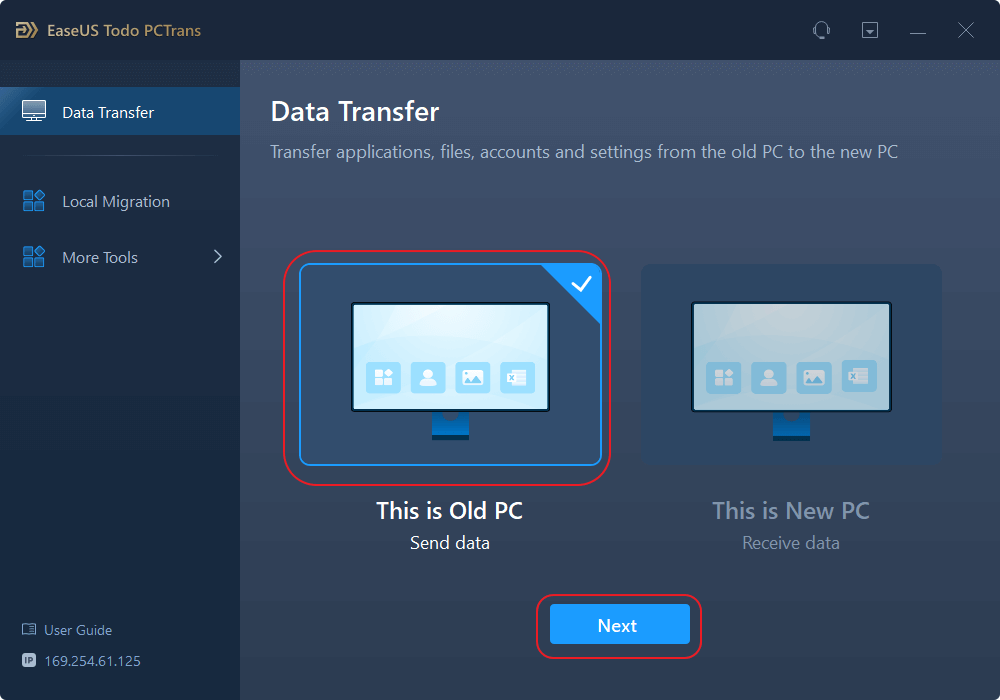
Then, on the new PC, select "Transfer directly" and click "Next" to continue.
Select "Network" and click Next to continue. This will automatically scan the old PC. (Make sure the two PCs are connected to the same LAN.)
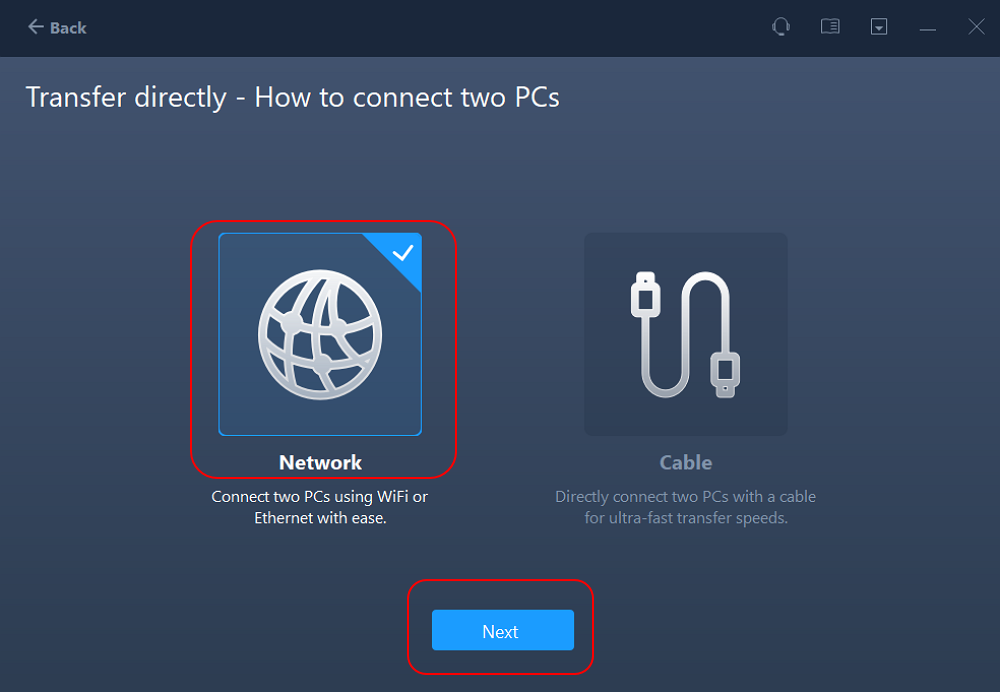
Select the target PC and click Connect. Then, it will take some time to scan and analyze the data in old PC.
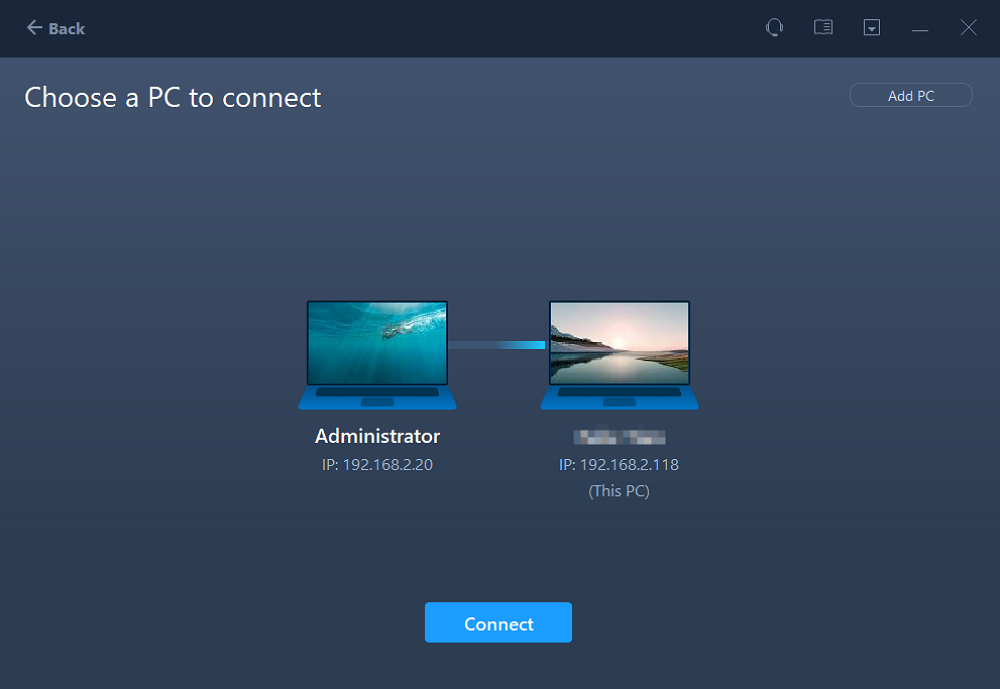
Step 3. Click at the "Accounts" section to specify User Accounts and Settings for transferring.
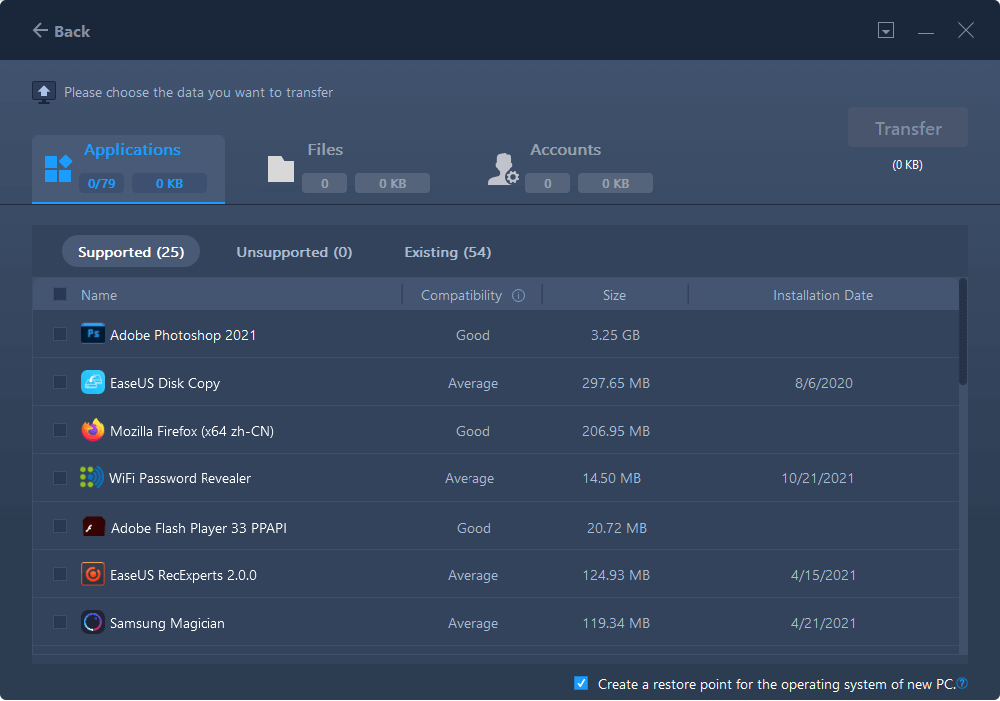
Step 4. Enter the user account and password of the source computer, select the User Account Settings, User Data and other settings that you want to transfer.
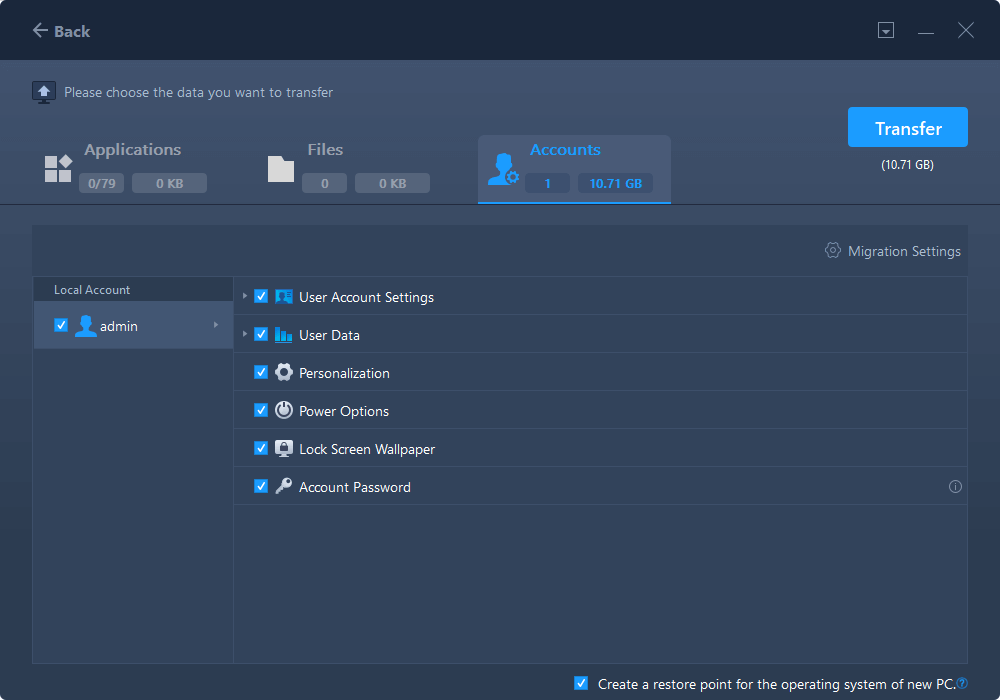
Step 5. After selection, click "Transfer" to start to transfer user accounts and settings.
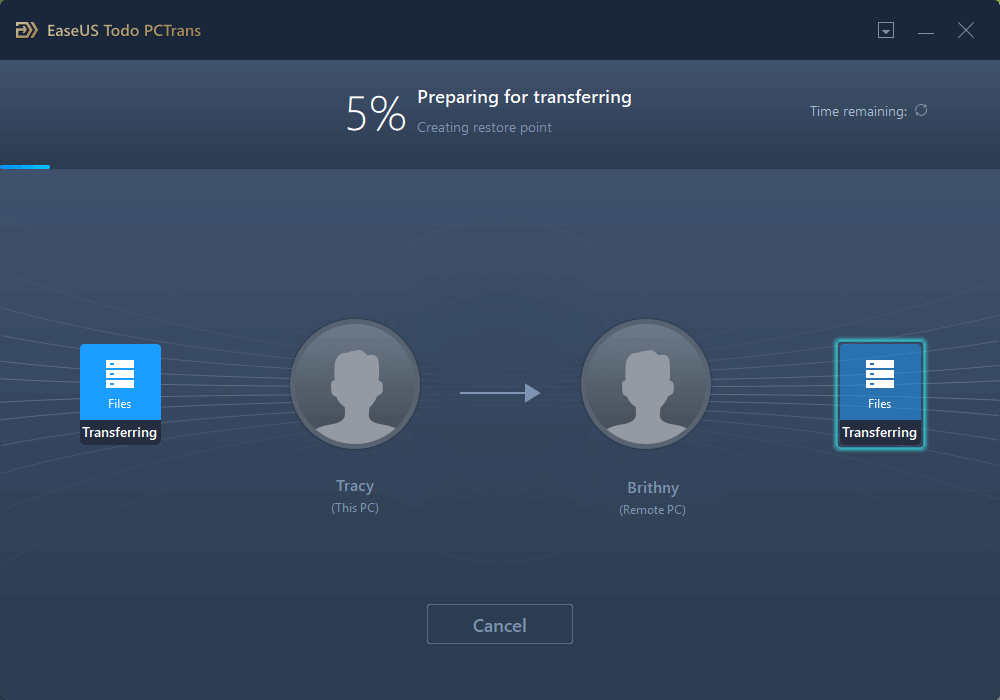
Please share this post to help more users transfer User Profile and Settings from Windows 10 to Windows 11!
#3. Use Microsoft's USMT (User State Migration Tool)
How to transfer User Profile and Settings from Windows 10 to Windows 11? The last recommended way is the User State Migration Tool from Microsoft. USMT is designed for administrators who carry out large-scale automated deployments.
For example, a user case from the Microsoft Community demonstrates that there is no better way for a department with 170 people than using USMT to transfer User Profiles for this department.
- About USMT
- USMT captures user accounts, user files, operating system settings, and application settings before migrating them to a fresh Windows installation.
- USMT is suitable for both PC replacement and PC refresh migrations.
- USMT is part of the Windows Assessment and Deployment Kit (Windows ADK).
Please refer to the following phases to transfer User Profile and Settings from Windows 10 to Windows 11 using USMT. Please be careful to adopt them because it's not easy for non-tech users to operate.
Phase 1. Download and install USMT
Step 1. Download and install the Windows ADK > run the installer.
Step 2. On the Select the features you want to install page, select User State Migration Tool (USMT).
Phase 2. Plan the migration
Step 1. Select an online migration or an offline migration. For offline migrations, you can use either Windows Preinstallation Environment (WinPE) or files from the Windows.old directory.
Step 2. Create a Config.xml file if you want to exclude any components from the migration. To generate this file, use the ScanState.exe command with the following parameters:
- /genconfig
- /i - as arguments specify the .xml files that are being used with ScanSate.exe.
For example, the following command generates a Config.xml file from the MigDocs.xml and MigApp.xml files:

Step 3. Open the Config.xml file generated in the previous step. Check the migration status of each component indicated in the Config.xml file. If necessary, modify the Config.xml file to include migrate=no for any components that do not need to be migrated.
Phase 3. Collect files and settings from Windows 10
Step 1. Back up your Windows 10 > close all the applications
- USMT fails if it is unable to migrate a file or setting, unless the /c option is used. When the /c option is used, USMT ignores errors and logs an error every time a file is used that USMT did not migrate. The section in the Config.xml file specifies which failures should be ignored and which should cause the migration to fail.
Step 2. To collect files and settings, launch the ScanState.exe program on the source machine. All the .xml files required by the ScanState.exe program should be supplied.
- For example, you can type ScanState.exe \\server\migration\mystore /config:Config.xml /i:MigDocs.xml /i:MigApp.xml /v:13 /l:ScanState.log in the Command Prompt window.
Step 3. To confirm that the created store is not corrupted, use the UsmtUtils.exe command with the /Verify option.
Phase 4. Prepare the destination computer and restore files and settings
Step 1. Install all the applications with the same version on your Windows 11 > close all the apps.
- If some apps are running while the LoadState.exe command is executed, USMT may not transfer all of the supplied data.
- If issues occur during the migration, use /c to continue. Use the section in the Config.xml file to define which errors should be ignored and which should cause the migration to fail.
Step 2. Execute the LoadState.exe command on the destination machine. Use the duplicate set of .xml files that were supplied when the ScanState.exe command was run. However, the Config.xml file does not necessarily have to be specified. The Config.xml file is only required to exclude specific files and settings that were migrated to the store.
- For example, the command below migrates the files and settings: LoadState.exe \\server\migration\mystore /config:Config.xml /i:MigDocs.xml /i:MigApp.xml /v:13 /l:LoadState.log.
Step 3. Sign out after performing the LoadState.exe command. Some options, such as fonts, background, and screen savers, will not be applied until the user signs in again.
Conclusion
How to transfer User Profile and Settings from Windows 10 to Windows 11? This article lists three feasible ways for you. You can select a suitable method based on your specific situation.
In short, if you only need to transfer one User Profile and Settings, you can manually copy it from your Windows 10 system and paste it into your Windows 11 system. If you need to transfer multiple User Profiles and Settings, EaseUS Todo PCTrans Free appears to be a better choice due to its powerful features and easy-to-follow operating steps.
FAQs about User Profile and Settings Migration, and Data Transfer
This section also lists several relevant topics, including User Profile and Settings migration, data transfer, and more.
1. Does upgrading Windows 10 to 11 keep personal files and apps?
Yes, it does. You can upgrade from Windows 10 to Windows 11 using the update page in the Settings app or the Upgrade Assistant with a Local Account; no Microsoft Account login is required. The transition is simple, and the update will not affect your data, settings, or installed software.
If you want to upgrade Windows 10 to Windows 11 without losing programs, EaseUS Todo PCTrans is a more comprehensive choice.
2. How do I transfer my settings from one Windows account to another?
How to transfer data from one user account to another in Windows 10? You can refer to the following steps.
Step 1. Enter Control Panel in the search bar > click it to open it.
Step 2. Click System > select Advanced System Settings > under the User Profiles tab, click Settings.
Step 3. Choose the profile you want to copy > click Copy to.
Step 4. Select Browse or enter the folder name > click OK.
3. About User profile synchronization
Microsoft SharePoint imports user and group attribute information into the User Profile Application (UPA) via an Active Directory synchronization task.
When a new user is added to Microsoft Entra ID, the user account information is delivered to the SharePoint directory store, and the UPA sync process generates a profile in the User Profile Application using a predefined set of attributes. Once the profile is built, any changes made to these properties will be synchronized as part of the regularly scheduled sync process.
Please share this post to help more users transfer User Profile and Settings from Windows 10 to Windows 11!
About the Author
"I hope my articles can help solve your technical problems. If you are interested in other articles, you can check the articles at the bottom of this page. Similarly, you can also check my Twitter to get additional help."
Reviews and Awards
-
EaseUS Todo PCTrans Free is a useful and and reliable software solution created to serve in computer migration operations, be it from one machine to another or from an earlier version of your OS to a newer one.
Read More -
EaseUS Todo PCTrans is by the folks at EaseUS who make incredible tools that let you manage your backups and recover your dead hard disks. While it is not an official tool, EaseUS has a reputation for being very good with their software and code.
Read More
-
It offers the ability to move your entire user account from your old computer, meaning everything is quickly migrated. You still get to keep your Windows installation (and the relevant drivers for your new PC), but you also get all your apps, settings, preferences, images, documents and other important data.
Read More
Related Articles
-
Windows Server 2016 Migration Step by Step Guide
![author icon]() Jean/2025/04/01
Jean/2025/04/01 -
Is Intel Data Migration Software Good? Here is the Answer!
![author icon]() Tracy King/2025/04/01
Tracy King/2025/04/01 -
How to Reinstall Windows 10 without Losing Files
![author icon]() Tracy King/2025/04/01
Tracy King/2025/04/01 -
9 Best PC to PC File Transfer Methods 2025 (Infographic Poster)
![author icon]() Tracy King/2025/04/01
Tracy King/2025/04/01
